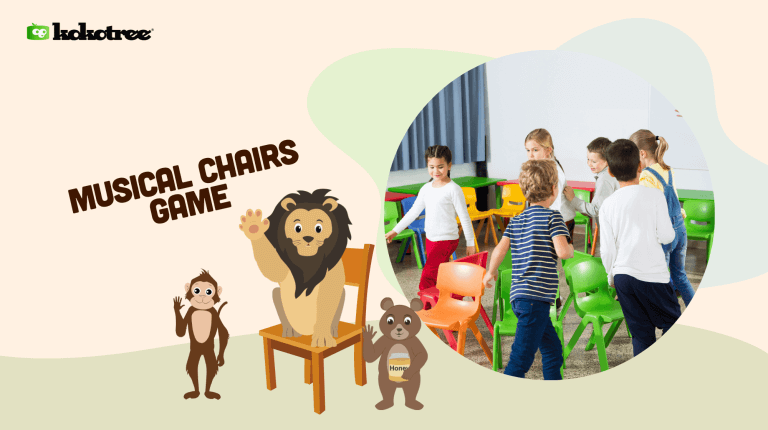

Written by: Kokotree
Last updated:

When it comes to classic, interactive games for kids, few can beat the excitement and educational value of Musical Chairs. This timeless game isn’t just a riot of fun but is also a dynamic way to teach children about music, rhythm, and quick decision-making.
Musical Chairs is a game where participants walk, skip, or dance around a set of chairs while music plays. When the music stops, everyone must find a chair to sit in. The catch? There’s always one less chair than players, so someone gets left standing!
For ages 2-6. They watch and play for 20 minutes. You get a break.
⭐ 5,000+ parents get daily breaks with Kokotree.
Try it Free →Works in 30 seconds • No credit card • Cancel anytime
To set up a game of Musical Chairs, you’ll require:
The aim of Musical Chairs is straightforward: find a chair to sit in each time the music stops. The fun and challenge lie in the decreasing number of chairs and the unpredictability of the music, making this a high-stakes game of musical suspense!
Absolutely, Musical Chairs isn’t merely a pastime; it’s a multifaceted learning tool for kids. Here’s a deep dive into the various skills that this engaging game helps to foster:
By playing Musical Chairs, your child is not just involved in a “game,” but in a rich, developmental experience that combines physical, cognitive, musical, and social learning. This makes it an excellent choice among preschool games, offering a full spectrum of benefits.
Musical Chairs is perfect for children aged 3 and up.
Absolutely, it’s a great game for all ages!
20-30 seconds is usually ideal.
Either is fine, as long as everyone is safe and having fun!
Yes, just make sure there is ample space and nothing breakable around.
Musical Chairs offers more than just a good time; it’s a holistic experience that impacts motor skills, cognitive development, and social interaction. So what are you waiting for? Incorporate this classic into your next gathering or classroom activity!



